The AMD 3rd Gen Ryzen Deep Dive Review: 3700X and 3900X Raising The Bar
by Andrei Frumusanu & Gavin Bonshor on July 7, 2019 9:00 AM EST** = Old results marked were performed with the original BIOS & boost behaviour as published on 7/7.
Benchmarking Performance: CPU Rendering Tests
Rendering is often a key target for processor workloads, lending itself to a professional environment. It comes in different formats as well, from 3D rendering through rasterization, such as games, or by ray tracing, and invokes the ability of the software to manage meshes, textures, collisions, aliasing, physics (in animations), and discarding unnecessary work. Most renderers offer CPU code paths, while a few use GPUs and select environments use FPGAs or dedicated ASICs. For big studios however, CPUs are still the hardware of choice.
All of our benchmark results can also be found in our benchmark engine, Bench.
Corona 1.3: Performance Render
An advanced performance based renderer for software such as 3ds Max and Cinema 4D, the Corona benchmark renders a generated scene as a standard under its 1.3 software version. Normally the GUI implementation of the benchmark shows the scene being built, and allows the user to upload the result as a ‘time to complete’.
We got in contact with the developer who gave us a command line version of the benchmark that does a direct output of results. Rather than reporting time, we report the average number of rays per second across six runs, as the performance scaling of a result per unit time is typically visually easier to understand.
The Corona benchmark website can be found at https://corona-renderer.com/benchmark
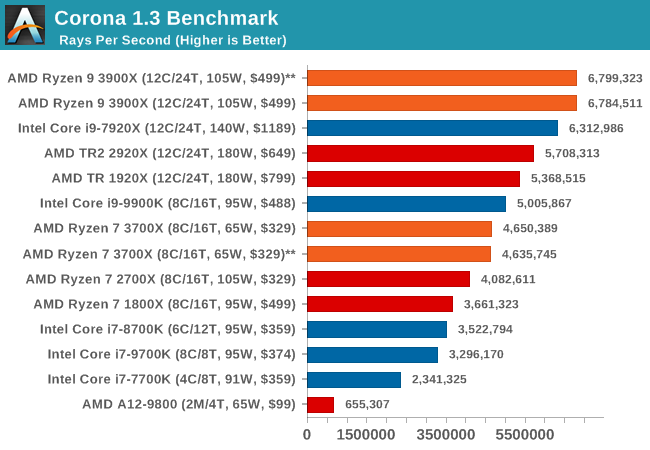
LuxMark v3.1: LuxRender via Different Code Paths
As stated at the top, there are many different ways to process rendering data: CPU, GPU, Accelerator, and others. On top of that, there are many frameworks and APIs in which to program, depending on how the software will be used. LuxMark, a benchmark developed using the LuxRender engine, offers several different scenes and APIs.

Taken from the Linux Version of LuxMark
In our test, we run the simple ‘Ball’ scene on both the C++ and OpenCL code paths, but in CPU mode. This scene starts with a rough render and slowly improves the quality over two minutes, giving a final result in what is essentially an average ‘kilorays per second’.

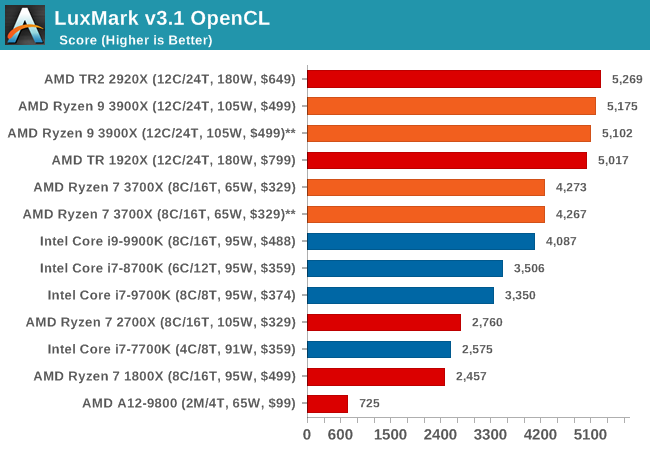
POV-Ray 3.7.1: Ray Tracing
The Persistence of Vision ray tracing engine is another well-known benchmarking tool, which was in a state of relative hibernation until AMD released its Zen processors, to which suddenly both Intel and AMD were submitting code to the main branch of the open source project. For our test, we use the built-in benchmark for all-cores, called from the command line.
POV-Ray can be downloaded from http://www.povray.org/
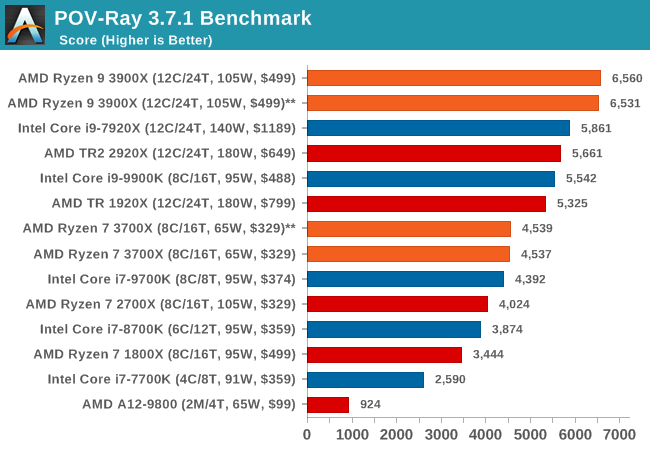
Cinebench R15
The latest version of CineBench has also become one of those 'used everywhere' benchmarks, particularly as an indicator of single thread performance. High IPC and high frequency gives performance in ST, whereas having good scaling and many cores is where the MT test wins out.
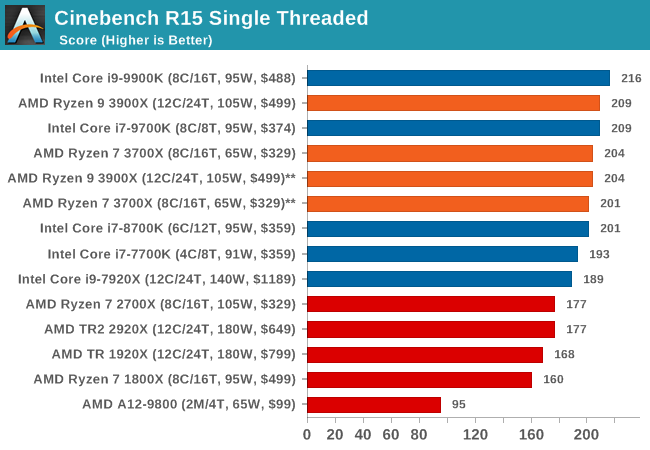
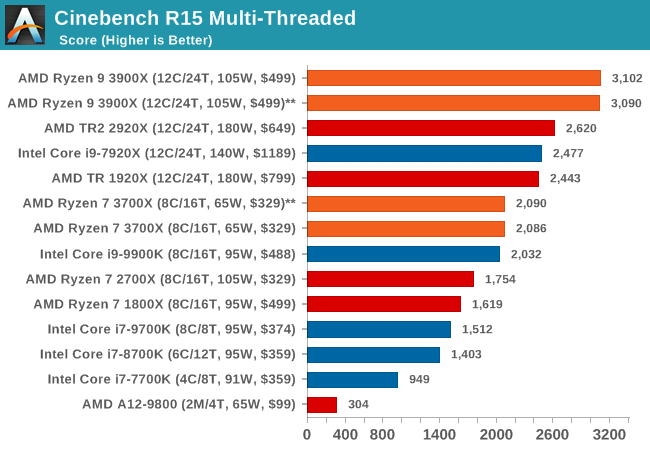











447 Comments
View All Comments
djayjp - Sunday, July 7, 2019 - link
So results for Intel chips are completely invalid then.futrtrubl - Sunday, July 7, 2019 - link
You will need to have to explain that then. Comparing Intel with mitigations vs AMD with mitigations.djayjp - Sunday, July 7, 2019 - link
No. Fallout/ZombieLoad does not affect AMD chips.djayjp - Sunday, July 7, 2019 - link
Intel performance will suffer whereas AMD's won't be affected.WaltC - Sunday, July 7, 2019 - link
Ha-ha...;) So because AMD has a newer architecture without most of the vulnerabilities that plague Intel's ancient CPU architectures--it should be held against AMD? Rubbish...;) Look, what is unfair about testing both architectures/cpus with all the mitigations that each *requires*? I can't see a thing wrong with it--it's perfect, in fact.extide - Sunday, July 7, 2019 - link
They tested Intel WITHOUT Fallout/ZombieLoad which would affect them. Probably not by much, though, honestly.RSAUser - Monday, July 8, 2019 - link
Well the results are close enough for a lot of tests to be error margin, that the mitigation would put AMD in the lead.The tests should reflect real world as of when the article is published, using old results without declaring that Intel doesn't have mitigation applied on every page is the equivalent of falsifying the results as people will buy based on these tests.
mkaibear - Monday, July 8, 2019 - link
"using old results without declaring that Intel doesn't have mitigation applied on every page is the equivalent of falsifying the results as people will buy based on these tests."Oh, that's just inane. They quite openly state the exact test specification on the "Test Bed and Setup" page, including which mitigations are applied. Arguing that not putting one particular piece of information on every page means it's the equivalent of falsifying the results is completely ridiculous.
RSAUser - Tuesday, July 9, 2019 - link
How many go through the test bed set up page?Meteor2 - Sunday, July 14, 2019 - link
Pretty much everyone reading such an in-depth review, I should think.